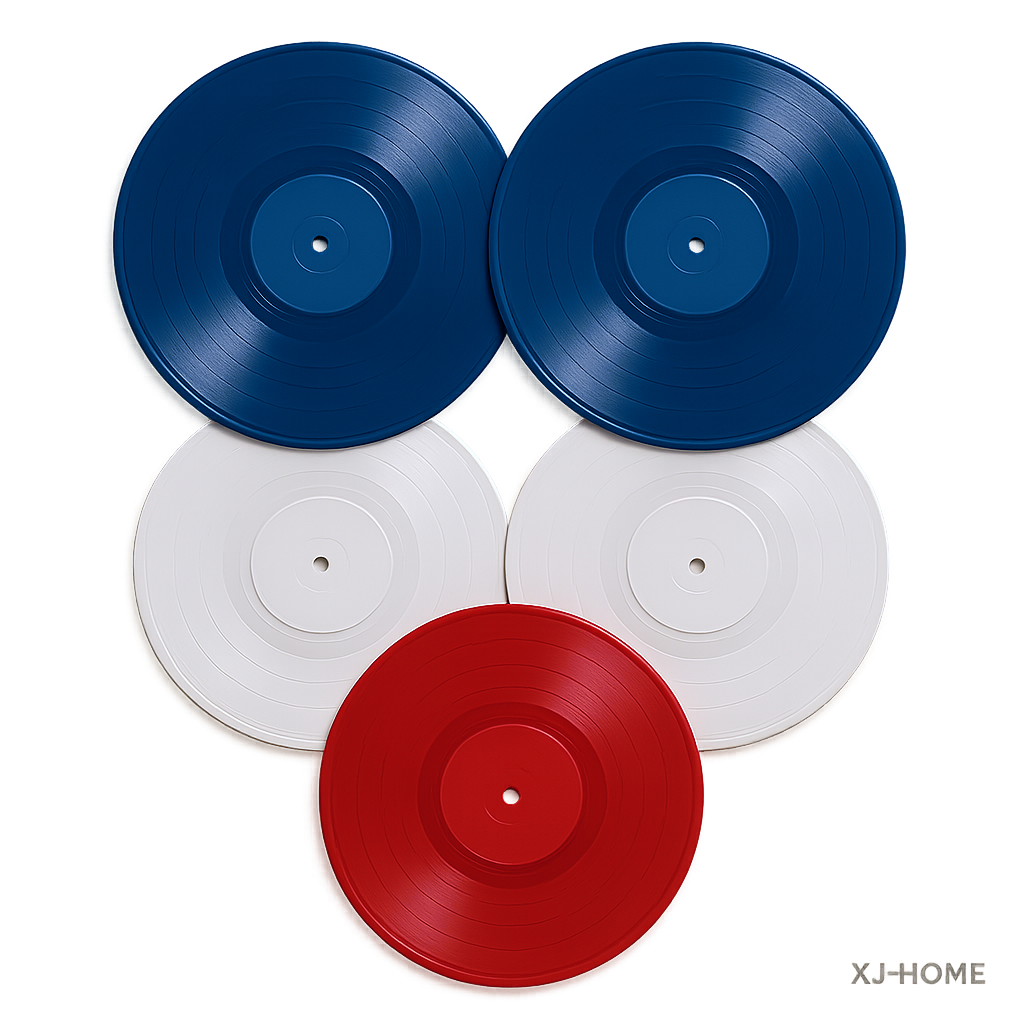For the dedicated vinyl enthusiast, there often comes a point where the familiar path of mid-fi upgrades begins to ascend into more rarified territory: the world of high-end record players. This isn't merely about acquiring a status symbol or chasing an ever-receding horizon of expenditure. It's about a profound desire to get closer to the music, to strip away layers of artifice and hear the performance as the artists and engineers intended. But what truly constitutes "high-end," and how does one navigate this often-bewildering landscape?
The term "high-end" can be nebulous, sometimes cynically deployed. However, at its core, it signifies a commitment to uncompromising performance, achieved through meticulous engineering, superior materials, and often, a distinct design philosophy. It's where the science of playback meets the art of musical reproduction. Forget fleeting trends; true high-end audio is about lasting value and an unwavering focus on sonic truth.
Part 1: Deconstructing Excellence - The Anatomy of a High-End Turntable
Moving beyond entry-level and mid-tier offerings, high-end turntables distinguish themselves through an obsessive attention to detail in every critical component.
Precision Engineering: The Bedrock of Performance
At this level, "close enough" is never good enough.
-
Bearings: The main platter bearing is a marvel of precision. We're talking about incredibly tight tolerances, exotic materials (like ceramics or hardened steel), and designs (inverted, magnetic) aimed at minimizing friction and noise to vanishingly low levels. A silent, stable bearing is fundamental.
-
Motor Units & Speed Stability: Motors are chosen for their smoothness, torque, and ability to maintain exact speed. Sophisticated power supplies and control systems ensure that wow and flutter (speed variations) are practically immeasurable. Whether belt-drive, direct-drive, or even meticulously re-engineered idler-wheel designs, the execution is paramount.
-
Plinth Construction & Material Science: The plinth (or chassis) is no longer just a base; it's a critical component in vibration management. High-end designs utilize massive, dense materials (high-grade aluminum, specialized composites, exotic woods, constrained layer damping), intricate internal bracing, or sophisticated suspension systems to isolate the delicate stylus/groove interface from both internal (motor) and external (airborne, floor-borne) vibrations.
The Tonearm: The Conductor of the Orchestra
Perhaps no other component is as critical or as varied in design at the high end.
-
Materials & Design: Arms are crafted from materials like carbon fiber, titanium, magnesium, or even specialized woods, chosen for their stiffness, low mass (or controlled mass distribution), and resonance characteristics. Designs range from classic gimballed bearings (executed with jewel-like precision) to unipivots (offering unique dynamic freedom) and even linear tracking arms that mimic the path of the cutting lathe.
-
Effective Mass & Cartridge Matching: Understanding the concept of effective mass and its relation to cartridge compliance is crucial. A high-end arm will often be designed with a specific range of cartridge compliance in mind, ensuring the combination resonates well outside the audible band.
-
Adjustability is Key: Precise VTA/SRA (Vertical Tracking Angle/Stylus Rake Angle), azimuth, anti-skate, and tracking force adjustments are non-negotiable. The ability to perfectly dial in the cartridge is essential for extracting maximum information.
The Platter: More Than Just a Spinning Disc
The platter's role is to provide a stable, inert, and non-resonant platform for the record.
-
Mass & Material: High-mass platters (often made from acrylic, Delrin, POM, aluminum alloys, or composite materials) contribute to speed stability through flywheel effect and can help damp vinyl resonances. The interface between the record and the platter (the mat, or sometimes no mat at all) is also a subject of intense design focus.
The Unspoken Element: Synergy
A collection of individually stellar components does not automatically guarantee a world-class turntable. The true magic of high-end design lies in the synergistic interplay of all these elements, meticulously tuned to work in concert. This is where the "art" of turntable design truly shines.
Part 2: Philosophies of Sound - Choosing Your Path to Audio Nirvana
As you venture into the high-end, you'll encounter different schools of thought regarding what constitutes the "best" sound. Understanding these philosophies can help you align your choice with your personal listening preferences.
-
The Purist/Neutrality Camp: These designs prioritize absolute fidelity to the source, aiming for maximum detail retrieval, transparency, and a flat frequency response. They strive to be a clean window into the recording, adding as little coloration as possible. Think surgical precision.
-
The Musicality/Engagement Camp: While still valuing accuracy, these designs might place a greater emphasis on qualities like pace, rhythm, and timing (PRaT), dynamic swing, and overall emotional engagement. They might possess a subtle character that listeners find more "musical" or "organic."
-
The "Built Like a Battleship" Camp: These tables emphasize extreme mass, rigidity, and isolation through sheer engineering heft. The philosophy is that by creating an incredibly stable and inert platform, the stylus can do its job with minimal interference.
-
The Legacy/Evolution Camp: Some iconic designs (like the Linn Sondek LP12 or certain Garrard/Thorens restorations) have been refined over decades, embodying a particular sonic signature that has captivated generations of audiophiles. Their enduring appeal speaks to a fundamental rightness in their approach.
Key Considerations for the Aspiring High-End Owner:
-
System Matching: A high-end turntable demands equally capable partners. Your phono stage, amplification, speakers, and even cabling and room acoustics will significantly impact the final sound. The goal is system synergy.
-
Setup, Setup, Setup: These are not plug-and-play devices. Meticulous setup is crucial and can be a rewarding ritual. If you're not comfortable with this, factor in the cost of professional installation.
-
The Importance of Auditioning: Whenever possible, listen before you buy, ideally with music you know well and in a system that's comparable to your own. This is where a knowledgeable and reputable dealer becomes invaluable. At XJ-HOME, we believe that informed choices lead to greater long-term satisfaction.
-
The Law of Diminishing Returns: Be honest with yourself. While improvements can be found at every price point, the sonic gains per dollar spent tend to become smaller as you ascend. Define what level of performance truly satisfies you.
Part 3: Exemplars of Excellence - Understanding Design Intent
Rather than a "best of" list (which is inherently subjective), let's consider a few examples that illustrate different successful design philosophies:
-
The Precision Direct-Drive Reimagined: Modern high-end direct-drive turntables (e.g., Technics SL-1000R, some VPI models) have overcome the cogging and noise issues of older designs. They offer exceptional speed stability and a very "direct" sound, often lauded for their powerful bass and dynamic presentation.
-
The Suspended Sub-Chassis Legacy: Designs like the Linn Sondek LP12 or the SME Model series utilize a sprung suspension to isolate the platter and tonearm from motor and external vibrations. This approach often yields a fluid, "bouncy" sound with excellent musical flow.
-
The High-Mass, Non-Suspended Approach: Companies like Kronos Audio or larger Clearaudio models champion massive, rigid plinths and platters to dissipate and damp vibrations. These tables often deliver a sound characterized by solidity, authority, and holographic imaging.
-
The Unipivot Tonearm Virtuosos: Brands that favor unipivot tonearms (like Well Tempered Lab or some high-end Rega arms) often achieve a remarkable sense of air, delicacy, and micro-dynamic nuance.
The point isn't to declare one approach superior but to appreciate the engineering goals and sonic signatures that different philosophies produce.
Part 4: The XJ-HOME Perspective - An Investment in Musical Connection
The pursuit of a high-end record player is, at its heart, a quest for a deeper, more meaningful connection with music. It's about creating an environment where the technology recedes, and the artistry takes center stage. This aligns perfectly with the ethos we cultivate at XJ-HOME and on our website, xenonjade.com. We believe that investing in quality audio components is an investment in countless hours of joy, discovery, and emotional resonance.
A truly great turntable doesn't just play records; it unlocks the performances held within their grooves. It allows you to hear the subtle inflections in a singer's voice, the texture of a bow on a string, the air around the instruments – details that transform listening from a passive activity into an immersive experience. For those seeking to understand more about the technical nuances that contribute to this, the detailed reviews and technical explanations found on sites like Stereophile can be an invaluable resource.
Conclusion: Trust Your Ears, Enjoy the Journey
The "best" high-end record player is the one that brings you closest to your music, that consistently engages and delights you within the context of your system and your listening preferences. There are no shortcuts, and the journey involves research, careful consideration, and, most importantly, trusting your own ears.
Embrace the exploration. The world of high-end analog playback offers a lifetime of rewards for the discerning audiophile. The pursuit itself is part of the passion, leading to a richer appreciation for both the art of music and the science of its reproduction.
Happy listening!





Leave a comment
All comments are moderated before being published.
This site is protected by hCaptcha and the hCaptcha Privacy Policy and Terms of Service apply.